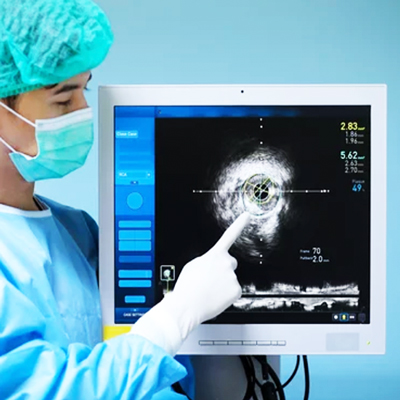
Restoring the Flow
Treating Total Vessel Occlusion
Totally Occluded Vessels
Frequently Asked Questions
What are the symptoms of Chronic Total Occlusion?
Chronic total occlusion symptoms may vary as per common signs including chest pain, shortness of breath, fatigue, and reduced exercise tolerance. Some patients may also be asymptomatic.
How is chronic total occlusion diagnosed?
The diagnosis of chronic total occlusion is typically made using diagnostic tests such as coronary angiography or cardiac imaging techniques like CT scans or stress tests.
Can chronic total occlusion be treated without surgery?
Yes, depending on the severity and location of the occlusion, non-surgical treatments such as percutaneous coronary intervention (PCI) or medications may be used to treat chronic total occlusion.
Are there any risks associated with treating totally occluded vessels?
Like any medical procedure, treating occluded vessels carries certain risks, including bleeding, infection, allergic reactions, or damage to the blood vessels. However, these risks are generally low and can be managed by experienced healthcare professionals.
Are there any lifestyle changes that can help prevent occluded vessels?
Adopting a heart-healthy lifestyle can reduce the risk of developing occluded vessels. This includes maintaining a balanced diet, engaging in regular physical activity, quitting smoking, managing stress & controlling conditions such as high blood pressure and diabetes.
Subscribe to Platinum For Heart Newsletter
Sign up now and get free access to our monthly newsletter on Heart health & More
Sources:
1. www.heart.org
2. www.mayoclinic.org
3. www.narayanahealth.org
4. www.apollohospitals.com
5. www.fortishealthcare.com
Disclaimer: The information presented by Boston Scientific Corporation is for educational purposes only and does not recommend self-management of health issues. The information should not be treated as comprehensive and does not intend to provide diagnosis, treatment or any medical advice. Individual results may vary and hence, it is advisable to consult your doctor regarding any medical or health related diagnosis or treatment options.
IC-1659802AA-0823
